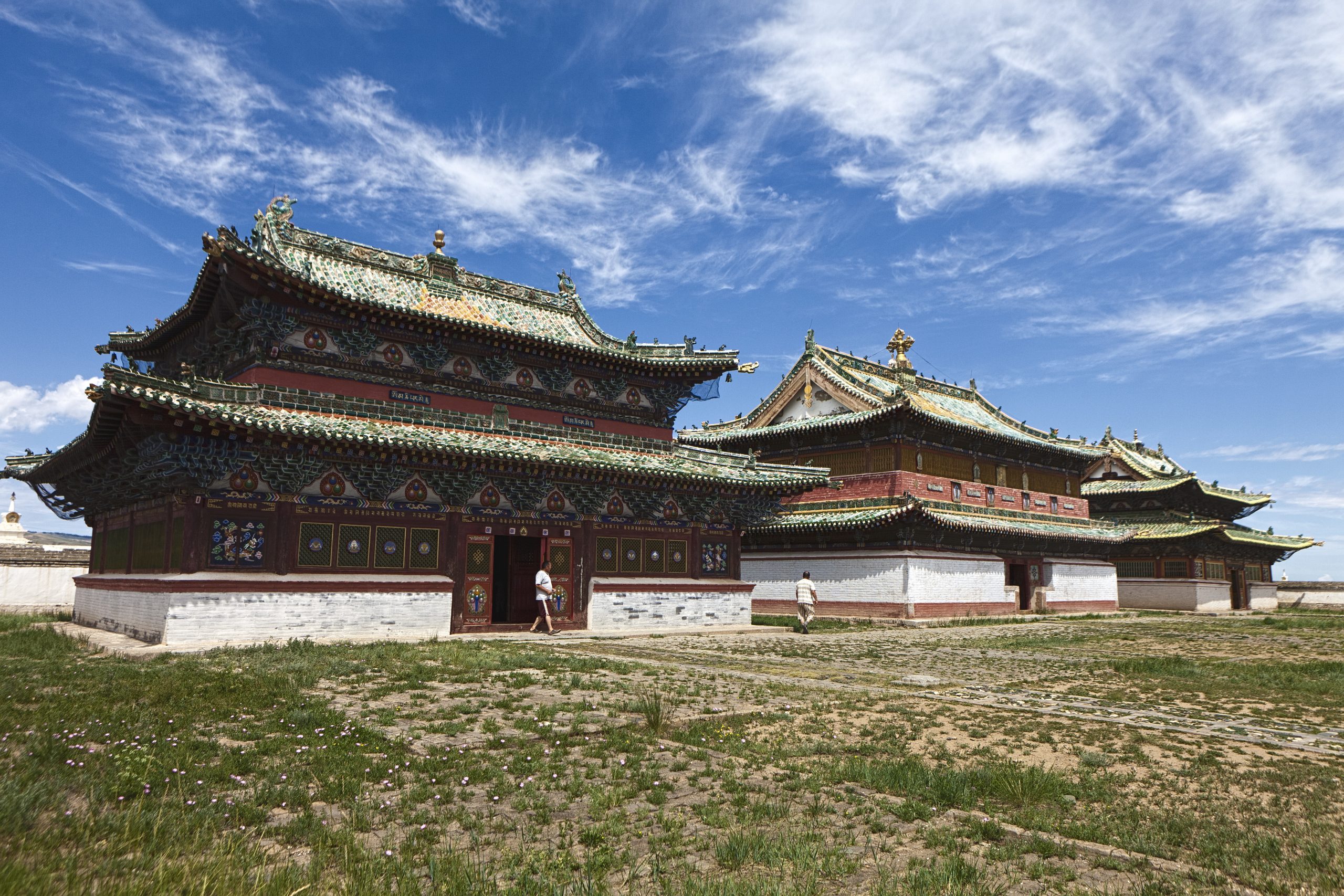Mongolians have a reputable history of having an open-minded attitude towards all religions. Historical records reveal that there were 12 Buddhist temples, 2 Islamic mosques, and a Christian church In the capital city of the Great Mongol Empire Karakorum and under the rule of Munkh Khaan, the grandson of Chinggis Khaan, the first-ever inter-religion theoretical debate was held in 1254. They even legalized religious freedom in the “Ikh Zasag” law.
SHAMANISM
 Shamanism, one of the oldest religious beliefs still exists among Mongolians today in a close relationship with an original ideology that values an existence congruent with nature and Tengrism (the belief to worship the sky). Tengrists believe the sky, earth, nature, and spirits of their ancestors guard and bless all people. Therefore, they aspire not to disturb the ecological balance, and live a sacred life, cultivating their spirituality, valor, and intellectual powers.
Shamanism, one of the oldest religious beliefs still exists among Mongolians today in a close relationship with an original ideology that values an existence congruent with nature and Tengrism (the belief to worship the sky). Tengrists believe the sky, earth, nature, and spirits of their ancestors guard and bless all people. Therefore, they aspire not to disturb the ecological balance, and live a sacred life, cultivating their spirituality, valor, and intellectual powers.
Costumes and ceremonies of shamanism are truly astounding. It is believed Mongolian shamans’ guardian spirits remain in their costumes, which have specific traditional ways of being made and worn. Mongolian Shamans differ slightly between each ethnic groups. It is noteworthy that some practices of shamanism have been adopted by Mongolian Buddhism and have created a symbiosis throughout the history.
BUDDHISM
 Although Buddhism first arrived in Mongolia as early as 2nd century BC, it became widespread later in the 16th century and since then has been the main religion in the country.
Although Buddhism first arrived in Mongolia as early as 2nd century BC, it became widespread later in the 16th century and since then has been the main religion in the country.
Undur Gegeen Zanabazar (High Saint Zanabazar), the historic enlightener of Mongolia, spread Buddhism in Mongolia. Mongolian costumes, ritual instruments, methods for making statues of gods, and the composition of chants stand out from other Buddhist countries. For instance, Mongolian mantras are styled differently from Tibetan mantras, and their harmonies sound like Mongolian folk songs with beautiful melodies.

In the 17th century, the peak period of Buddhism in Mongolia, the nomadic and Buddhist schools of medicine were brought together to create great advancement. This period in time is called the “Golden Era” in the history of Mongolian science of medicine.
Buddhism in Mongolia has attained its own unique characteristics, adopting an original way of thinking and the rich traditions of nomads to be identified as “Mongolian.” Modern day Mongolians exhibit great religious tolerance, too. It may be because they consider religious beliefs and doctrines as wisdom, and they have deep respect towards any source of knowledge and wisdom. Mongolians can always find something in common with other religions or spiritual beliefs and their own ideology
